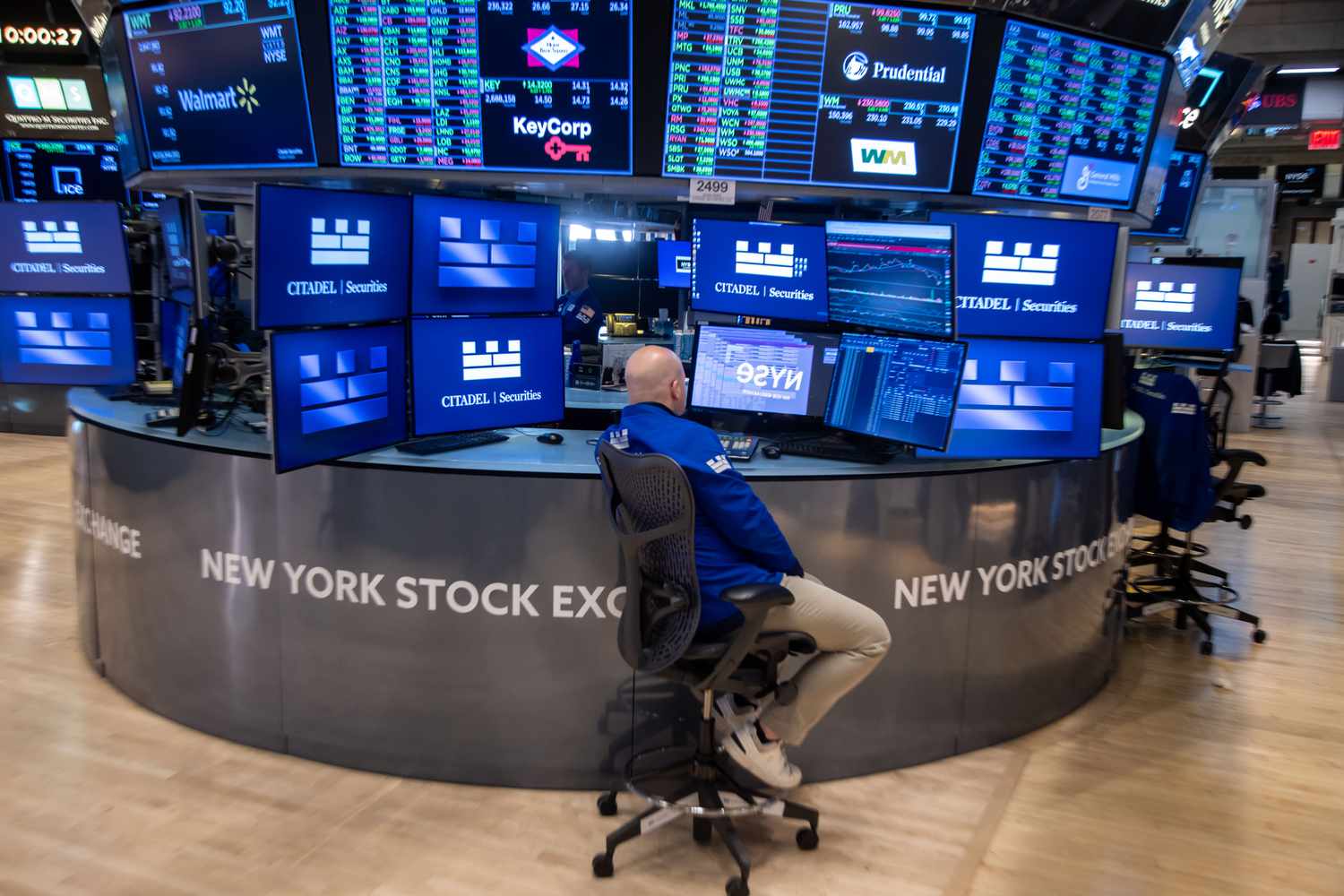Now Reading: A Beginner’s Guide to the Oz Stock Market
-
01
A Beginner’s Guide to the Oz Stock Market
A Beginner’s Guide to the Oz Stock Market

Have you ever heard people talking about stocks and shares and felt a little lost? You’re not alone. The world of finance can seem complex, but understanding the basics is easier than you think. One market that often comes up in global discussions is the Australian stock market, sometimes referred to as the oz stock market. This guide will walk you through everything you need to know about it, from what it is to how it works, all in simple, easy-to-understand terms. We’ll explore the key players, the types of companies you can invest in, and how technology is changing the game for investors.
Key Takeaways
- The oz stock market is primarily represented by the Australian Securities Exchange (ASX), where shares of public Australian companies are bought and sold.
- Major sectors include finance, materials (mining), healthcare, and consumer goods, featuring well-known companies.
- The S&P/ASX 200 is the main index, tracking the performance of the top 200 companies and serving as a key indicator of the market’s health.
- Understanding how to read stock quotes, which include information like the ticker symbol, price, and trading volume, is fundamental for any investor.
- Before investing, it’s crucial to define your financial goals, understand your risk tolerance, and consider a long-term strategy.
What Exactly is the Oz Stock Market?
When people refer to the oz stock market, they are talking about the system for buying and selling shares in Australia’s publicly listed companies. Think of it as a giant marketplace. Instead of selling fruits or clothes, this market sells tiny pieces of ownership in companies. These pieces are called shares or stocks. The main hub for this activity in Australia is the Australian Securities Exchange, more commonly known as the ASX. It’s one of the largest and most respected stock exchanges in the world. When a company decides to “go public,” it lists its shares on the ASX, allowing people like you and me to invest in its future. This process helps companies raise money to grow, and it gives investors a chance to share in their success. The health of the oz stock market is a strong indicator of the overall Australian economy.
The Role of the Australian Securities Exchange (ASX)
The Australian Securities Exchange (ASX) is the heart of the oz stock market. Its job is to provide a fair, orderly, and transparent place for companies, investors, and brokers to trade securities. The ASX sets the rules, oversees all the trading activity, and makes sure everyone plays by them. This oversight is crucial for building trust and confidence among investors. Without a regulated exchange like the ASX, investing would be much riskier and more chaotic. The ASX also provides the technology that makes trading possible, processing millions of transactions every day. It’s not just for stocks; the ASX also handles trading for other financial products like bonds, options, and futures, making it a comprehensive financial marketplace.
Understanding the Main Indices
How do we know if the oz stock market is doing well? We look at its indices. An index is a tool used to track the performance of a group of stocks. It provides a snapshot of the market’s overall health.
The S&P/ASX 200
The most important index for the oz stock market is the S&P/ASX 200. This index tracks the performance of the 200 largest companies listed on the ASX by market capitalization (the total value of all a company’s shares). When you hear news reports saying the market is “up” or “down” for the day, they are usually referring to the movement of the S&P/ASX 200. It’s the benchmark that most professional investors and fund managers use to measure their own performance.
Other Key Indices
Besides the S&P/ASX 200, there are other indices that focus on different parts of the market. For example, the All Ordinaries (often called the “All Ords”) tracks a broader group of around 500 companies. There are also specific indices for different sectors, like the S&P/ASX 200 Financials or the S&P/ASX 200 Resources. These allow investors to track the performance of specific industries within the wider oz stock market.
Major Sectors and Companies on the Oz Stock Market
The oz stock market is diverse, with companies from many different industries. However, a few key sectors dominate the landscape. Understanding these sectors can help you see where the country’s economic strengths lie.
The Powerhouse Financial Sector
Australia is home to some of the world’s biggest and most stable banks. The financial sector, which includes banks, insurance companies, and asset managers, makes up a significant portion of the oz stock market. Companies like Commonwealth Bank (CBA), Westpac (WBC), National Australia Bank (NAB), and Australia and New Zealand Banking Group (ANZ) are known as the “Big Four.” They are some of the largest companies on the ASX and have a major influence on the S&P/ASX 200’s performance. Their stability and consistent dividend payments make them popular choices for investors seeking reliable income.
The Mighty Materials and Mining Sector
Australia is rich in natural resources, and this is reflected in its stock market. The materials sector, dominated by mining giants, is another cornerstone of the oz stock market. Global leaders like BHP Group (BHP) and Rio Tinto (RIO) mine for iron ore, copper, coal, and other essential commodities. The fortunes of these companies are often tied to global demand and commodity prices. When the world economy is growing and needs more raw materials for construction and manufacturing, these companies tend to perform very well.
Other Important Sectors
While finance and materials are the largest, other sectors play a vital role.
- Healthcare: Australia has a world-class healthcare industry, featuring companies like CSL Limited, a global leader in biotech, and Cochlear, famous for its hearing implants.
- Consumer Staples: These are the companies that sell everyday necessities, like groceries. Supermarket giants Woolworths and Coles are major players here.
- Real Estate: Known as A-REITs (Australian Real Estate Investment Trusts), these companies own and manage properties like shopping centers, office buildings, and industrial warehouses.
How to Start Investing in the Oz Stock Market
Getting started with investing in the oz stock market has never been easier, thanks to technology. The first step for any new investor is to open a trading account with a stockbroker. A stockbroker is a company that is licensed to buy and sell shares on your behalf. There are many options available, from traditional full-service brokers who offer personalized advice to online discount brokers with low fees. Online platforms have made it simple to open an account, deposit funds, and start trading from your computer or smartphone. These platforms provide access to real-time market data, research tools, and educational resources to help you make informed decisions. For more in-depth financial insights, you can also explore resources from established publications like those found at https://forbesplanet.co.uk/, which cover a wide range of economic topics.
Understanding Stock Quotes
Once you have a trading account, you’ll need to learn how to read a stock quote. It might look like a jumble of numbers and letters at first, but it contains essential information.
|
Component |
Description |
Example (for a fictional company “OzCorp”) |
|---|---|---|
|
Ticker Symbol |
A unique 3 or 4-letter code for the company. |
OZCO |
|
Last Price |
The price of the last trade that occurred. |
$25.50 |
|
Change |
The change in price from the previous day’s close. |
+$0.50 (2.00%) |
|
Bid / Ask |
The highest price a buyer is willing to pay / The lowest price a seller is willing to accept. |
$25.49 / $25.51 |
|
Volume |
The number of shares traded so far in the day. |
1,200,000 |
Understanding these basic elements is the first step toward analyzing a potential investment in the oz stock market.
Investment Strategies for Beginners
Jumping into the oz stock market without a plan is like sailing without a compass. It’s important to have a strategy based on your financial goals and comfort level with risk.
Long-Term Investing vs. Short-Term Trading
One of the first decisions to make is your time horizon. Long-term investing involves buying shares in solid, well-established companies with the intention of holding them for many years. The goal is to benefit from the company’s growth and dividend payments over time. This approach is generally less stressful and focuses on the fundamental strength of the business rather than short-term market fluctuations. Short-term trading, on the other hand, involves buying and selling stocks more frequently to profit from price movements. This is a much riskier strategy that requires more time, knowledge, and attention to market trends. For most beginners, a long-term approach is the recommended path.
Understanding Risk and Diversification
All investing involves some level of risk. The value of your shares can go down as well as up. A key principle to manage this risk is diversification. This means not putting all your eggs in one basket. Instead of investing all your money in a single company or a single industry, you should spread it across different companies in various sectors of the oz stock market. For example, you might own some bank shares, some mining shares, and some healthcare shares. If one sector performs poorly, your losses can be offset by gains in another sector. This simple but powerful concept is a cornerstone of smart investing.
The Impact of Global Events on the Oz Stock Market
The oz stock market does not exist in a vacuum. It is deeply connected to the global economy, and events happening on the other side of the world can have a significant impact on share prices in Australia. For example, economic growth in China is very important, as China is the biggest customer for Australia’s resources like iron ore. A slowdown in the Chinese economy can lead to lower commodity prices, which in turn hurts the share prices of mining giants on the ASX. Similarly, decisions made by central banks like the U.S. Federal Reserve can influence interest rates and investor sentiment globally, affecting the oz stock market. As an investor, it’s important to pay attention to major international news and economic trends.
Conclusion
The oz stock market offers a fantastic opportunity for individuals to build wealth and participate in the growth of the Australian economy. While it might seem intimidating at first, the core concepts are straightforward. By understanding the role of the ASX, the major sectors and companies, and the basic principles of investing like diversification and long-term thinking, you can start your journey with confidence. Remember that investing is a marathon, not a sprint. Take your time to learn, start with small amounts you are comfortable with, and focus on building a solid, diversified portfolio for the future. With patience and a clear strategy, the oz stock market can be a powerful tool in achieving your financial goals.
Frequently Asked Questions (FAQ)
Q1: What is the minimum amount of money I need to start investing in the oz stock market?
A1: There is no official minimum, but the first trade on the ASX must be for at least A$500 worth of shares in a single company. After that, you can invest smaller amounts. Many online brokers also allow you to start with very small initial deposits into your account.
Q2: How do I get paid from owning stocks?
A2: There are two main ways to make money from stocks. First, through capital gains, which is when you sell your shares for a higher price than you paid for them. Second, through dividends, which are a portion of a company’s profits paid out to its shareholders, typically twice a year.
Q3: Is investing in the oz stock market safe?
A3: All investments carry risk, and the value of stocks can go down. However, the oz stock market is highly regulated by the ASX and the Australian government, which provides a level of safety and transparency. You can manage your personal risk by diversifying your investments and investing for the long term in quality companies.
Q4: Do I need a financial advisor to invest?
A4: You are not required to have a financial advisor. Many people successfully manage their own investments using online brokerage platforms. However, if you are unsure where to start or want personalized advice based on your financial situation, consulting a licensed financial advisor can be very helpful.
Q5: What are the main trading hours for the oz stock market?
A5: Normal trading on the ASX runs from 10:00 AM to 4:00 PM, Australian Eastern Standard Time (AEST), Monday to Friday. The market is closed on national public holidays.



















